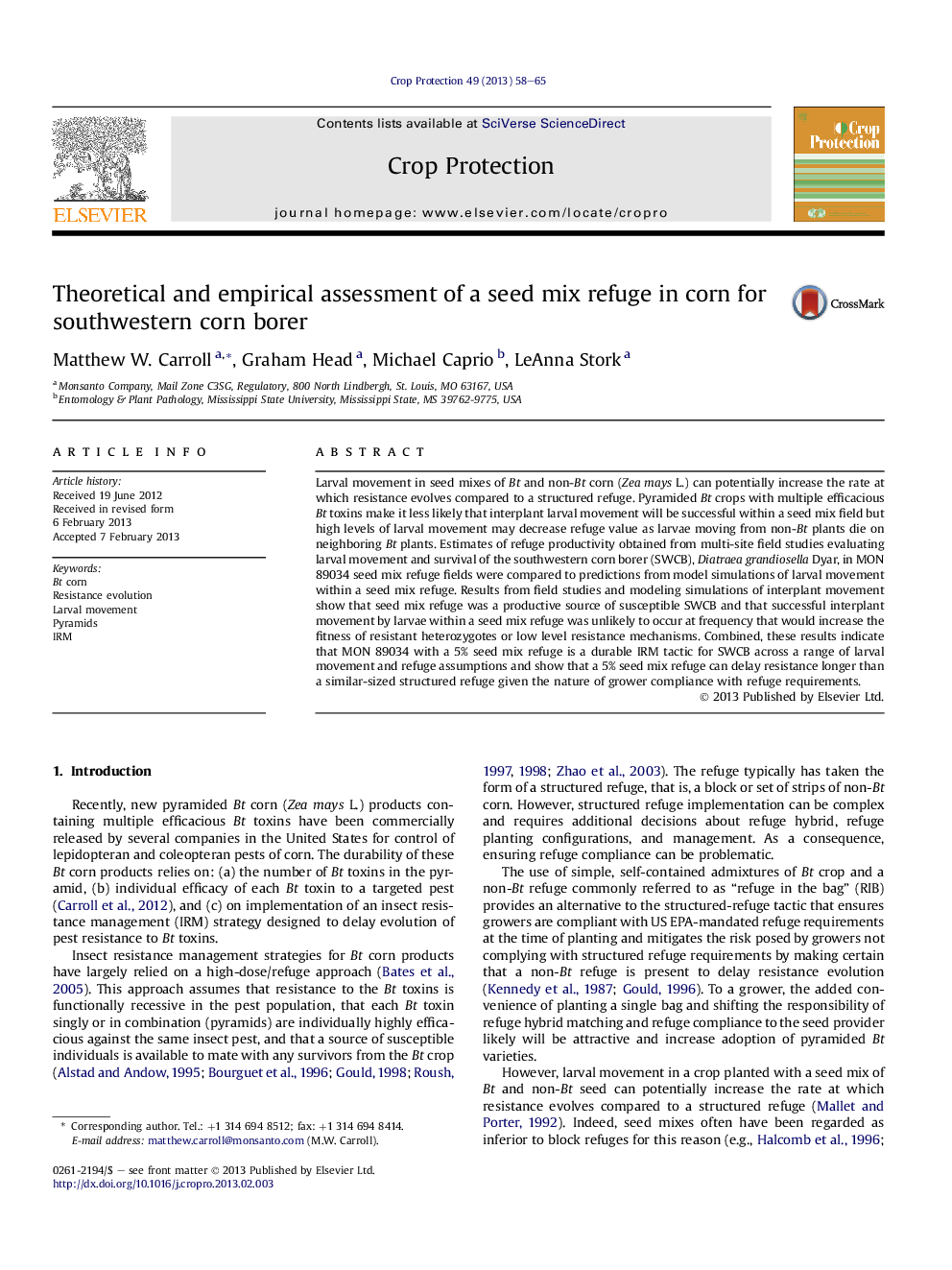| Article ID | Journal | Published Year | Pages | File Type |
|---|---|---|---|---|
| 4506199 | Crop Protection | 2013 | 8 Pages |
Larval movement in seed mixes of Bt and non-Bt corn (Zea mays L.) can potentially increase the rate at which resistance evolves compared to a structured refuge. Pyramided Bt crops with multiple efficacious Bt toxins make it less likely that interplant larval movement will be successful within a seed mix field but high levels of larval movement may decrease refuge value as larvae moving from non-Bt plants die on neighboring Bt plants. Estimates of refuge productivity obtained from multi-site field studies evaluating larval movement and survival of the southwestern corn borer (SWCB), Diatraea grandiosella Dyar, in MON 89034 seed mix refuge fields were compared to predictions from model simulations of larval movement within a seed mix refuge. Results from field studies and modeling simulations of interplant movement show that seed mix refuge was a productive source of susceptible SWCB and that successful interplant movement by larvae within a seed mix refuge was unlikely to occur at frequency that would increase the fitness of resistant heterozygotes or low level resistance mechanisms. Combined, these results indicate that MON 89034 with a 5% seed mix refuge is a durable IRM tactic for SWCB across a range of larval movement and refuge assumptions and show that a 5% seed mix refuge can delay resistance longer than a similar-sized structured refuge given the nature of grower compliance with refuge requirements.
► IRM strategies relying on block refuge are vulnerable to refuge non-compliance. ► Bt pyramids partly offset refuge non-compliance, increasing Bt crop durability. ► Seed mix refuge strategy is a viable option where refuge compliance is a concern. ► Depending on compliance, a pyramid Bt seed mix and block refuge had similar durability.
